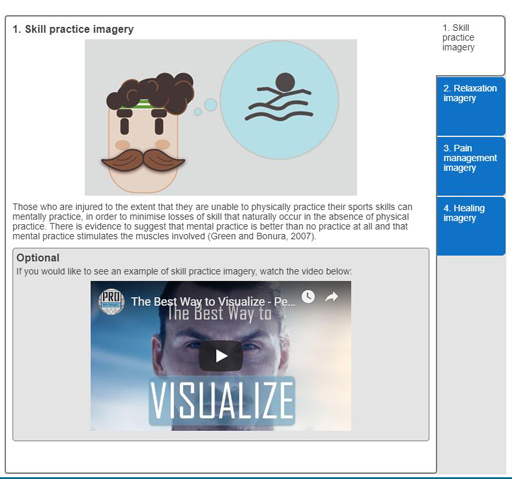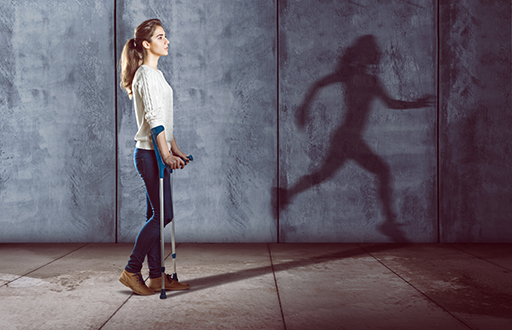2 Imagery in sport injury rehabilitation
In sport you often see athletes appearing to run through a performance in their mind before executing it (for example, a high jumper before a jump). This is an example of imagery.
Imagery can be defined as the process of ‘using one’s senses to re-create or create an experience in the mind’ (Vealey and Forlenza, 2015, p. 240). Imagery can be a useful technique for individuals to use during sport injury rehabilitation. It can be used in many different ways, including those outlined in Figure 3.

Activity 2 Using imagery to help Lois and Travis
Select one of our two case studies below (Lois or Travis) and read up on their progress. Make a list of how they could use imagery during their recovery from injury.
Lois has gone to see her sport psychologist Amir. They have been discussing how difficult she finds it to cope with the pain of the treatment that she is having on her Achilles tendon during physiotherapy sessions. Lois has asked Amir if he can recommend any techniques to help her as the pain is so intense that it’s causing her to tense up which makes it much harder for the physiotherapist to work on the injured area. |
Travis has been experiencing a lot of stress and anxiety due to his injury. Normally he would use exercise as a way of dealing with stress, but the injury is preventing him from exercising as he would like. He therefore needs to find an alternative way to relax and unwind. |
Discussion
All four examples of imagery in Figure 3 could be effective for both Lois and Travis. Pain management imagery would be particularly appropriate for Lois, while relaxation imagery would be particularly useful for Travis. Here are their thoughts on using these techniques:
I tried using the pain management imagery Amir suggested during my physiotherapy session today. I used it right at the point where the physio was really digging her fingers into my tendon which is when I normally tense up or flinch. I was amazed how well it worked – I coped with the pain so much better and the physio was able to do more work on it than normal.
(Lois)
I’ve started doing relaxation imagery every evening. At first it felt a bit weird but now I’m getting used to it and it’s really working. When I get in from work, I’m often feeling stressed and need to unwind, so now I lie down and take myself to my relaxing place in my mind and it calms me.
(Travis)
Next you move on to look at how self-talk can aid recovery from sport injury.

